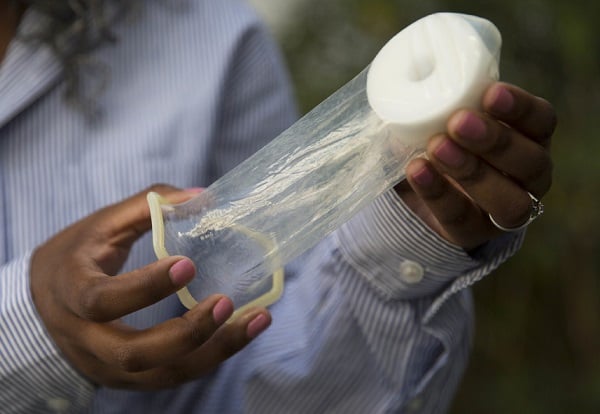Most people think condoms are just for males. However, there are condoms made for females called femidoms.
Most women do not like to use the birth control device made up of polyurethane or a newer version made of nitrile, a man-made latex-free material.
However, here are some of the important facts about female condoms you need to know.
What are female condoms?
Female condoms are a form of barrier contraception designed for women. These condoms are to be worn inside the vagina before sexual intercourse to prevent sexually transmitted infections (STIs) and unwanted pregnancy.
Female condoms are made of thin, soft plastic called polyurethane with two rings — an open ring that stays outside the vagina and helps to keep the condom in place, and a closed ring that is inserted into the vagina to cover the cervix.
These condoms offer women an alternative option for contraception as it helps reduce the complications that come with the use of contraceptives on women’s well-being.
Female condoms have been said to be 95% effective, particularly in preventing transmission of HIV and other STIs, when used correctly and consistently.
How do female condoms work?
Female condoms are worn inside the vagina. So they work by creating a barrier inside the vagina that prevents sperm from reaching the cervix and reduces the risk of pregnancy.
To enjoy its effectiveness, it is advised to make sure the penis does not come into contact with the vagina before the condom has been put in. As semen can still come out of the penis even before a man has fully ejaculated.
So during intercourse, the female condom acts as a barrier between the penis and the vagina.
It collects the ejaculated semen, preventing it from entering the vagina and coming into contact with the cervix. This helps to prevent pregnancy by blocking sperm from reaching the egg as well as STIs.
Are there pros and cons of using female condoms?
Yes, there are two sides to the use of female condoms — the advantages and disadvantages.
The advantages include;
- You do not need a doctor’s prescription or appointment to access female condoms
- They can be inserted 8 hours before sex
- There are no medical side effects from using female condoms
- Female condoms do not affect women’s hormones like other conceptive do. It is a safe option to prevent pregnancy
- The external ring of the female condom can create extra clitoral stimulation during intercourse, which can make sex more enjoyable
- They do not require a male erection to keep it in place
Disadvantages include;
- Female condoms can be hard to find in stores as they are not widely available as male condoms
- They can also be more expensive
- Female condoms are not easy to insert so it can take a little while to learn how to insert them correctly
- The sexual sensation can be reduced as they tend to be noisy during sex
- Female condoms can cause allergic reactions in women who are allergic to latex and polyurethane
- If not inserted well, it can tear during sex
- Female condoms are not quite as effective at preventing pregnancy as other birth control methods
How can female condoms be used correctly?
The Centers for Disease Control and Prevention (CDC) provides the following tips for the correct use of female condoms.
- Carefully open and remove the condom from the package to prevent tearing
- The thick, inner ring with the closed end is used for placing in the vagina and holds the condom in place. The thin, outer ring remains outside of the body, covering the vaginal opening
- Find a comfortable position. While holding the outside of the condom at the closed end, squeeze the sides of the inner ring together with your thumb and forefinger and insert it into the vagina. It is similar to inserting a tampon
- Using your finger, push the inner ring as far up as it will go until it rests against the cervix. The condom will expand naturally and you may not feel it
- Be sure the condom is not twisted. The thin, outer ring should remain outside the vagina
- Guide your partner’s penis into the opening of the condom. Stop intercourse if you feel the penis slip between the condom and the walls of the vagina or if the outer ring is pushed into the vagina
To remove:
- Gently twist the outer ring and pull the condom out of the vagina
- Throw away the condom in the trash after using it one time. Do not reuse
Where can female condoms be gotten?
It is unclear why female condoms are not as widely available as male condoms.
However, you can get female condoms at:
- Pharmacy
- Family planning clinic
- Online stores
- Health centers
Side Effects?
According to the Food and Drug Administration (FDA), some side effects are associated with using an internal condom, including:
- Burning
- Rash
- Discomfort
- Itching
Copyright 2025 TheCable. All rights reserved. This material, and other digital content on this website, may not be reproduced, published, broadcast, rewritten or redistributed in whole or in part without prior express written permission from TheCable.
Follow us on twitter @Thecablestyle

